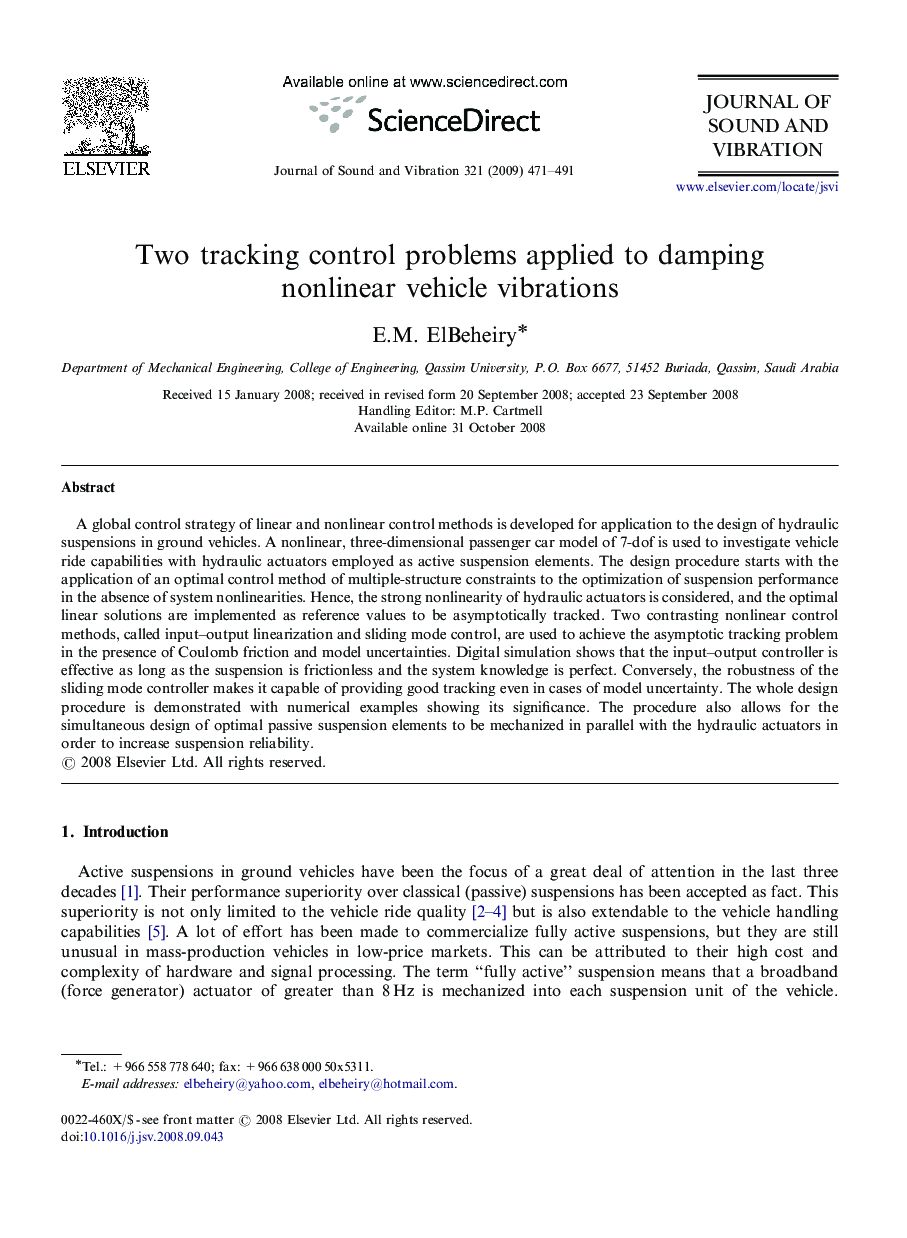| کد مقاله | کد نشریه | سال انتشار | مقاله انگلیسی | نسخه تمام متن |
|---|---|---|---|---|
| 291121 | 509751 | 2009 | 21 صفحه PDF | دانلود رایگان |

A global control strategy of linear and nonlinear control methods is developed for application to the design of hydraulic suspensions in ground vehicles. A nonlinear, three-dimensional passenger car model of 7-dof is used to investigate vehicle ride capabilities with hydraulic actuators employed as active suspension elements. The design procedure starts with the application of an optimal control method of multiple-structure constraints to the optimization of suspension performance in the absence of system nonlinearities. Hence, the strong nonlinearity of hydraulic actuators is considered, and the optimal linear solutions are implemented as reference values to be asymptotically tracked. Two contrasting nonlinear control methods, called input–output linearization and sliding mode control, are used to achieve the asymptotic tracking problem in the presence of Coulomb friction and model uncertainties. Digital simulation shows that the input–output controller is effective as long as the suspension is frictionless and the system knowledge is perfect. Conversely, the robustness of the sliding mode controller makes it capable of providing good tracking even in cases of model uncertainty. The whole design procedure is demonstrated with numerical examples showing its significance. The procedure also allows for the simultaneous design of optimal passive suspension elements to be mechanized in parallel with the hydraulic actuators in order to increase suspension reliability.
Journal: Journal of Sound and Vibration - Volume 321, Issues 3–5, 10 April 2009, Pages 471–491